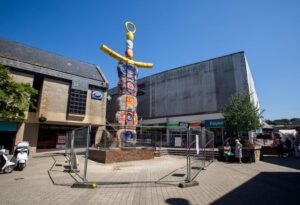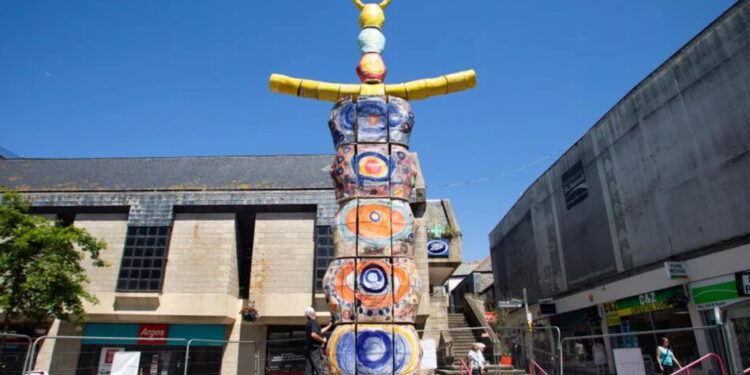Agencies-Gaza post
Giant statue sparks anger in Britain
The British giant statue was made by Sandy Brown, the world’s tallest ceramic sculpture in Elmer Square in the suburb of St. Austell in Cornwall Square, United Kingdom, in a 3-year artwork.
The statue, which the artist called it Earth Gods “Earth of Giudice”, cost about $96,923, had a height of 11.5 meters, and was planned to become a popular visitor landmark in the area but caused much publicity amid calls for its removal.


The citizens of St. Austell transmitted pictures of the statue through social media platforms, where opinions were divided among fans of the design and those who rejected its presence in the area.
“The statue is one of the most joyous locations in the suburb of St. Austell,” wrote a citizen of the region.
Hundreds marked a petition calling for the removal of the statue, considering it “bearing abusive religious connotations”.
According to the Yahoo news website, 417 people have so far signed a call to immediately remove the artwork, and a British citizen said, “Artworks should not be imposed on the inhabitants of St. Austell, any spiritual connotations, and this statue is an insult not only to the inhabitants of the area but also to God,” he said.
One opponent, the giant statue, which is taller than two double-decker buses, reached the cutting of the kebab meal.
Competitors of the artwork charged the high cost of creating the statue, and said, “It could have been provided to help those in need.”
In response to these complaints, the artist Brown explained that “the design of the statue aims to portray St. Austell’s heritage rich in Chinese ceramic sculpture.”
She added, “The statue is made of ceramic clay and is very intrinsic in this place, which embodies the unique history of the suburb, and represents our collective roots with the environment, nature, and motherland.”
“I don’t think this statue represents the city or its heritage, and the Chinese sculpture industry could have been better represented,” one citizen said.
For his part, British Parliament MP Steve Doble said, “Personally, if I was involved in choosing something that reflected St Austell’s identity, heritage, and history, I believe it was fair to say I wouldn’t have chosen this design.”






















